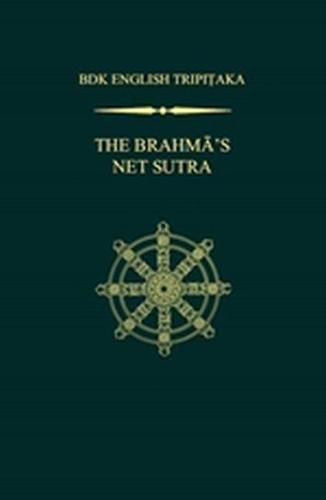Readings Newsletter
Become a Readings Member to make your shopping experience even easier.
Sign in or sign up for free!
You’re not far away from qualifying for FREE standard shipping within Australia
You’ve qualified for FREE standard shipping within Australia
The cart is loading…






The Brahma’s Net Sutra plays an important niche role in the development of East Asian Mahayana Buddhism. It is the primary extant Vinaya text that articulates the precepts from a Mahayana perspective. That is, it takes its main audience to be bodhisattva practitioners, mainly householders who remain engaged with society rather than becoming renunciant monks or nuns.
The Vinayas, and especially the discourse in this sutra, show monastic and lay Buddhist practitioners engaged at every level of society, from top to bottom. Buddhist practitioners were involved in military affairs, political intrigues, matchmaking, and every other sort of mundane social activity. The Vinaya texts reveal how the Buddhist community in its time judged and dealt with such matters.
The Brahma’s Net Sutra was written in two fascicles, each radically different in structure, content, theme, grammar, etc., from the other. The first fascicle discusses the forty Mahayana stages: the ten departures toward the destination, the ten nourishing states of mind, the ten adamantine states of mind, and the ten bodhisattva grounds. The second fascicle explains the ten grave precepts and the forty-eight minor precepts. These came to be referred to as the bodhisattva precepts, the great Brahma’s Net precepts, the buddha precepts, and so forth. The second fascicle has been especially esteemed, studied, and circulated separately for more than a millennium as the scriptural authority for the Mahayana bodhisattva precepts. [Adapted from the Translators’ Introduction.]
$9.00 standard shipping within Australia
FREE standard shipping within Australia for orders over $100.00
Express & International shipping calculated at checkout
The Brahma’s Net Sutra plays an important niche role in the development of East Asian Mahayana Buddhism. It is the primary extant Vinaya text that articulates the precepts from a Mahayana perspective. That is, it takes its main audience to be bodhisattva practitioners, mainly householders who remain engaged with society rather than becoming renunciant monks or nuns.
The Vinayas, and especially the discourse in this sutra, show monastic and lay Buddhist practitioners engaged at every level of society, from top to bottom. Buddhist practitioners were involved in military affairs, political intrigues, matchmaking, and every other sort of mundane social activity. The Vinaya texts reveal how the Buddhist community in its time judged and dealt with such matters.
The Brahma’s Net Sutra was written in two fascicles, each radically different in structure, content, theme, grammar, etc., from the other. The first fascicle discusses the forty Mahayana stages: the ten departures toward the destination, the ten nourishing states of mind, the ten adamantine states of mind, and the ten bodhisattva grounds. The second fascicle explains the ten grave precepts and the forty-eight minor precepts. These came to be referred to as the bodhisattva precepts, the great Brahma’s Net precepts, the buddha precepts, and so forth. The second fascicle has been especially esteemed, studied, and circulated separately for more than a millennium as the scriptural authority for the Mahayana bodhisattva precepts. [Adapted from the Translators’ Introduction.]